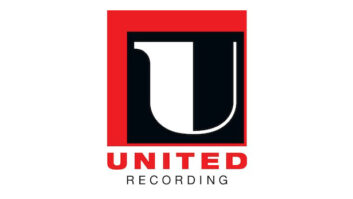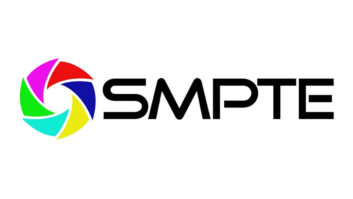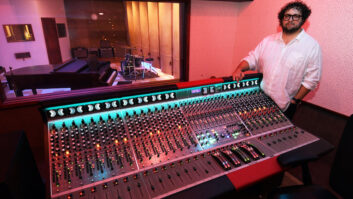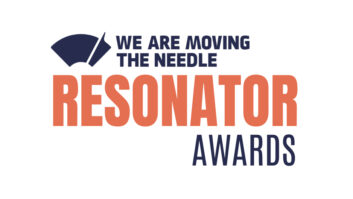CONSOLIDATION HITS THE POST-PRODUCTION SERVICES INDUSTRY
For the past few years, the global business economy has experienced an almost nonstop metamorphosis. One corporation after another has sought to acquire or merge with its competitors, usually in order to strengthen market position in today’s rough-and-tumble business climate.
To most of us in the music and sound production industries, these mergers seemed like events off on the distant horizon. When Daimler-Benz acquired Chrysler, the only concern for many motorists was whether or not the local dealer would remain operative – no one wants to drive too far to have a vehicle serviced. Similarly, the pending consolidations of United Airlines and US Air, or Northwest and Delta, will likely mean little more than the fact that travelers have fewer carriers to complain about.
CONSOLIDATION STRIKES CLOSER TO HOMEBut now, consolidation has hit the audio post-production industry in a big way, though perhaps less visibly than in the mergers mentioned above. In June 1999, Burbank-based 4MC (Four Media Company) acquired Digital Sound & Picture for $7.2 million in cash. The next month, the newly formed Liberty Livewire, a subsidiary of Liberty Media Group, announced its intention to acquire 4MC, Soundelux and Todd-AO. Meanwhile, the consolidations continued with Todd-AO’s acquisition of New York’s prominent Sound One.
But the real clincher came on June 12, 2000. Todd-AO Corporation announced that it had changed its name to Liberty Livewire Corporation. The change took place with the closing of the company’s transaction with Liberty Media Group, through which Liberty Media acquired a controlling interest in Todd-AO.
Immediately following this transaction, Liberty Media contributed to Liberty Livewire 100% of the capital stock of 4MC.(Liberty Media had completed the 4MC acquisition in April.)Then in July, Liberty Livewire announced its completed acquisition of Soundelux’s post-production and sound-related business operations for approximately $90 million in cash. By the time all was said and done, Liberty Livewire’s transactions were valued at more than a half-billion dollars – with still more acquisitions in the offing.
Later in July, Liberty Livewire completed its acquisition of Triumph Communications Group, a major force in the design, engineering and implementation of video transmission services. The Triumph deal was valued at $29.4 million, with Triumph shareholders receiving more than $5,684,483 in cash and 705,554 shares of Liberty Livewire Class B common stock. Further, Liberty Livewire also announced an agreement to acquire 100% of the stock of Video Services Corporation of Northvale, N.J., a deal valued at approximately $125 million.
As the dust settles, Liberty Livewire now has the infrastructure to provide the full spectrum of post-production, video and Internet distribution services. Liberty Livewire can now offer a “one stop shop” for the talent and resources needed in the rapidly emerging fields of interactive television and computer multimedia delivered via new broadband technologies, DVD and the more traditional broadcast television and film markets.
SMALLER INDEPENDENT SHOPS CONVERGEThe significance of the Liberty Livewire consolidation has prompted some industry observers to refer to it as “elephants mating,” but Liberty has not been the only consolidator in the post industry. In 1998, Pacifica Media Affiliates, led by Harold Katersky, Dana Arnold, Rick Delena and H. Galen Walker, began to assemble some of the best-recognized independent companies. Presently, Pacifica Media Affiliates includes Weddington Productions, Digital Soundworks, Hollywood Recording Services, Echo Sound and Larson Sound Center.
Unlike the larger firms within the Liberty Livewire fold, Pacifica Media Affiliates focus almost exclusively on sound editorial. According to H. Galen Walker, president and COO of Pacifica Media Affiliates, “Pacifica is based on sound editorial. Our strength lies in the quality and talents of our sound designers and editors – the people who are the meat and potatoes of this industry.”
Of course, not every post house has been swallowed up by a larger one. A small, select group of high-profile companies are independent and likely to remain so, including Skywalker Sound/ Lucas Digital Ltd., The Saul Zaentz Film Center and The Outpost Film Center in the San Francisco Bay Area, Wilshire Stages/EFX and SoundStorm in Los Angeles and C5 and Sync Sound/Digital Cinema in New York. And, unless there are surprise mergers among the major film studios, Universal, Disney, Warner Bros., Sony/Columbia/Tristar and 20th Century Fox will all continue to operate their own sound editorial and mixing stages. In addition to their own projects, the film companies also market their services to outsiders and are in competition for much the same business as everyone else.
THE NEW LANDSCAPEWhat are the factors that have brought about all of these mergers and acquisitions in the post industry? Two major issues are the continuing migration of work to Canada and a downward trend on the pricing of projects. Compounding these concerns is the fact that to keep their own facilities booked, the major film studios are courting independent projects more aggressively than ever.
Rick Larson, CEO of Pacifica Larson, says, “Our industry has experienced a heavy downward pressure on pricing. Whereas we may have charged $70,000 for our work on a movie of the week five years ago, that same type of project in today’s market is typically generating roughly $50,000. That makes matters very tough.”
H. Galen Walker agrees: “The trend toward downward pricing has made the business very challenging for everyone. Without being able to get suitable monetary compensation for its projects, it becomes difficult for a facility to remain competitive, from both a personnel and an equipment perspective. Without creative, capable and experienced people, you can’t attract the types of projects that you want, nor can you get the kind of compensation you need to remain profitable. This, in turn, impacts your ability to stay on top of technological changes. It all figures into the equation.
“I also believe that the ongoing migration to Canada is an additional factor contributing to the consolidation among the independents,” he continues. “Many of the shows produced in Canada are made by independent production companies, and these projects were previously available to mid-level firms such as Echo and Larson. With so many projects migrating to Canada, I believe the post-production community needs to band together. You can’t operate in an environment where someone else is forever undercutting your bid on a project.”
In recent years, the major studios have become yet another competitor for the independent filmmaker’s projects. Many of the independent audio post-production companies opened during the 1980s, a time when the major studios did not yet have their own facilities up to technological standards. During this period, the studios were making deals with independent producers to produce their shows off-site.
Several of the smaller, independent shops priced their work lower than many of the firms that remain in business today, making it hard for mid-level facilities to maintain a grip on their previous pricing structures. As the major studios upgraded their facilities, matters became even more difficult. And now that the studios are financing more independent projects, they have the clout to keep the production work on their lots.
“These factors created a situation where many independent facilities not only experienced a decrease in revenue, they also saw far fewer opportunities,” notes Walker. “Given these pressures on their business, several of the mid-level companies were confronted with the prospect of facing a very challenging marketplace or becoming part of a larger organization; thus, Pacifica Media Affiliates was born.”
THE IMPACT OF NEW MEDIAWhile pricing pressures, the migration of work to Canada and the more aggressive efforts of the major studios have all figured into the equation, the consolidation at the high end of the post-production services industry has also been fueled by the Internet and emerging broadband technologies. Liberty Media, whose interests include Time Warner, USA Network, Fox Sports, News Corp., MTV, the Discovery Channel, Starz Encore Group LLC and Black Entertainment Television, among others, has ambitious plans to move the traditional post-production business into a position where it can capitalize on these new technologies.
David Beddow, founder and CEO of Liberty Livewire, is focused on the future of interactive content. “If you focus on consolidation, you’re focusing on the wrong thing,” he says. “Consolidation is simply one necessary element of what is a more exciting and productive strategy. The consolidation that has occurred is purely a mechanism to assemble a critical mass of talent, skill and facilities necessary to realize our long-term vision. It’s really nothing more than that. It gives us a means of being able to accomplish what we want and to execute our strategy quicker than if we actually built the facilities from the ground up. It’s a make vs. buy decision more than anything else.
“Our strategy is one that defines the production, post-production, archiving and distribution of what is referred to these days as Internet content – and particularly as it relates to interactive media – as not being substantially different from the normal production and post-production systems currently in use,” he continues. “By assembling this group of companies, we are able to establish a consolidated company that has an excellent reputation with its client base, as well as an excellent reputation for quality work. This `new’ company is a trusted player in the theatrical, long-form TV, commercial production and music video communities. We’re involved in literally every facet of production.”
It is that same client base that now needs interactive services. By assembling the required production elements up front, Beddow believes, the process of producing interactive content for the Internet, DVD and emerging media formats will be that much more streamlined and efficient.
“It has been our supposition,” notes Beddow, “that the production of Internet content in an interactive environment is best handled if that material is produced, post-produced, archived and distributed in the same chain and under the same creative control as the video content. Under our plan, there will be people focusing on the interactive aspects of material from concept through final delivery. By planning for and incorporating these various elements during the normal stages of production, you then have all elements under the same creative control as the original product.”
THE DISTRIBUTION PIPELINEHaving major post-production companies under its belt places Liberty Media in the enviable position of being able to accommodate Hollywood’s creative community in every aspect of production. In the distribution area, Liberty Media has a particularly strong deck of cards. To grasp the scope of the consolidations outlined above, it is crucial to understand the relationships among the various players.
Liberty Livewire is a partially owned subsidiary of Liberty Media Group, which owns approximately 85% of the company. The balance of Liberty Livewire trades publicly on NASDAQ under the symbol LWIRA. As mentioned earlier, Liberty Media Group has investments in a huge number of companies. If Liberty Media were a free-standing corporation, it would have a market capitalization of approximately $77 billion. In practice, Liberty Media doesn’t produce anything; it acts as a holding company of media interests. While there are instances where content produced by one Liberty property is purchased by another (such as by Time Warner or Fox), Beddow describes these transactions as “arm’s length relationships.” He was also quick to point out that “there are some cases where companies that we have investments in compete with other companies that we have investments in.” Liberty Media is also a tracking stock of AT&T. (A tracking stock is a special type of stock issued by a publicly held company – in this case, AT&T – to track the value of one segment of the company, enabling investors to value the different segments of the company independently.) Through its relationship with AT&T, Liberty Media has established an arrangement whereby the company now provides a very cost-effective means of hosting Web sites that are associated with interactive content. Given AT&T’s access to approximately 45% of the homes in America, this gives Liberty Media an unprecedented delivery mechanism for its material. In Beddow’s words, “Just as today we have access to satellite and fiber capacity for the distribution of material, we now have access to the full AT&T IP (Internet Protocol) backbone for the worldwide distribution of Web content – and that’s what makes this whole business exciting.”
EXCITING TO SOME, A CONCERN FOR OTHERSThe scope of Liberty Media and its Liberty Livewire subsidiary is huge compared to anything the music and sound services industries have witnessed thus far. For the most part, industry observers and professionals alike are optimistic about the recent activity, though there has been speculation that Liberty Media will at some point make an offer to acquire a major studio. Should this occur, some people have voiced concern that Liberty Media and AT&T could find themselves in the position to define and control content all the way from production through distribution.
When asked about this scenario, Beddow emphasized, “The fact of the matter is that none of this falls under the control of a single entity. The companies are all operated as separate investments, and the relationships that exist between the companies are all arm’s length relationships. We have no call or first-priority right to any AT&T distribution. Our content companies deal with AT&T for distribution just as any other company would. The people who run the broadband distribution make their own decisions as to what type of content they put on the cable systems – as they rightly should.
“If you look closely, you will find cases where our content is not being carried by the broadband cable systems. It is not a whole set of assets that are managed as one company, because they in fact, are not. The Liberty board has a fiduciary responsibility to Liberty, and the AT&T board has a fiduciary responsibility to AT&T. Likewise, we own about 12 percent of Time Warner that happens to be a non-voting interest. We have absolutely no say in what Time Warner does.”
REACTION FROM THE TRENCHESWith so many companies, facilities and people involved in the Liberty and Pacifica consolidations, everyone expects the nature of the business to change. That change, however, is expected to be gradual, with both organizations streamlining their operations in order to add the greatest value for their clientele.
Jonathan Porath, chief engineer at Liberty Livewire, expressed enthusiasm over recent events. “What we have now that we didn’t have before is mixing talent from both coasts working in facilities on both coasts,” says Porath. “I think we’ll see more shifting of talent, which, I believe, will be good for all of us. By learning how to accomplish various tasks in a more effective manner, this sharing of knowledge makes us all that more competitive.”
With the Internet and various interactive mediums poised for an expanding role in the post-production process, Porath echoed Beddow’s vision of the future. “Ultimately, I would expect the organization to make an effort to exert greater influence over how a project is produced – both to better control costs and to make the content available in a wider number of media.”
THE REALITY OF THE “ONE STOP SHOP”While the considerably smaller Pacifica Media Affiliates expects to concentrate its efforts on building the sound editorial side of its business, Liberty Livewire is now positioned to operate as a “one stop shop.” In a business that is very relationship-based, there has been concern that the “corporate view” could interfere with the creative process.
Burbank-based SoundStorm, one of the few remaining independent sound editorial facilities has, thus far, not experienced any negative fallout from the recent consolidations. Daniel R. Chavez, VP of client service and sales, shared his take on the changing nature of the business. “The primary concern for SoundStorm is to address the needs of our clients,” says Chavez. “Companies that are vertically integrated and can offer the `one stop shop’ may at some point find themselves unable, in what is a very relationship-based business, to go outside the company for various aspects of production. When you own your own stage, you are under tremendous pressure to keep that stage busy as there is a huge capital expenditure involved. As a result, a project may be forced onto a particular stage when, in reality, it is not the best choice for the filmmaker.
“Often, it’s the filmmaker’s feeling and past experience that to achieve their sonic vision, they not only want their particular sound supervisor overseeing the project, but they may also want a particular mixer that they have worked with in the past who quite often resides at a separate facility,” Chavez adds. “We will package with anybody, enabling a project to have sound editorial performed at SoundStorm and mixing elsewhere. I will arrange a deal for any mixing facility where the client would like to go.”
Rick Larson echoes Chavez’s sentiments. “Our sister company, Echo, has been very successful by not limiting their clients to one set of stages for mixing,” notes Larson. “In many respects, Echo pioneered the concept of taking a project to be mixed at whatever facility was best for the producer and the project itself. As a result, they arrange deals where the project can be mixed at Sony, Universal or whatever other facility is best suited from a creative standpoint.
“While Echo now has dubbing stage facilities through its affiliation with Larson, we are not limiting the way they conduct their business,” he continues. “We certainly like to handle the project in-house, but if it is best served by being mixed at another facility, then by all means, we want to ensure that the project goes where it belongs.”
Walker concurs, “Pacifica is in no way looking to compete with Liberty. Interestingly, while we are one of their largest competitors, we are also one of their largest clients. We dub on a number of their stages for much of our television work. Weddington works on their stages with some of our feature projects. Our strength is in sound editorial – this is where we will remain focused.”
The Wilshire Stages in Hollywood is another independent facility that continues to thrive in the current business environment. Paul Rodriguez, senior VP/Advanced Digital Post Group, is optimistic about his company’s status and offered the following thoughts: “I believe that though ownership has changed, the physical structures and the people who work in the various facilities remains largely the same. As a result, not too much has changed – at least yet. Right now, it’s more of a conceptual `strength in numbers’ issue than anything else.
“Ultimately, there’s still the same amount of choices, it’s just that many of these companies are operating under a common name,” he adds. “This business is largely based on relationships, so producers are going to continue working with people they know and feel comfortable with.”
KEEPING THE STAGES BUSYWhile the studios’ slates may be somewhat reduced, the success of films such as There’s Something About Mary, Good Will Hunting and others have led to a greater amount of independent product, though these days, with Disney owning Miramax and AOL/Time Warner owning New Line, it’s often hard to say just what makes a project “independent.” These independent projects have inspired filmmakers, and both the independent facilities and members of the Pacifica Media Affiliates believe we will continue to see an increase in smaller projects.
This, in turn, makes one wonder if the increased number of independent projects will be enough to sustain the smaller companies. Paul Rodriguez believes the volume exists. “Our stages are running day and night with a number of very interesting projects, and traditionally, summer is the slow period. We don’t limit ourselves to just sound for TV and film. We’re also involved in video games, large-format shows, special venue assignments such as theme parks and other projects. We look at all segments of the market in order to keep our stages and our people busy. Ultimately, this gives us a much broader base in the market.”
The audio post-production business is experiencing dramatic changes throughout all levels of the industry. While a fair amount of uncertainty exists, the opportunities presented by the Internet and interactive media, combined with a resurgence in the market for independent projects, is fueling far more optimism than pessimism.
What this all boils down to is the fact that the post-production industry needed to address the evolving marketplace – and accomplishing this required a reshuffling of the deck. The changes that have occurred are expected to provide a significant expansion of both capability and work that should be a very positive turn of events for all involved. With more streamlined operations, a pooling of resources and talent and the public’s never-ending thirst for new forms of entertainment, the post-production industry stands at the threshold of opportunity.







